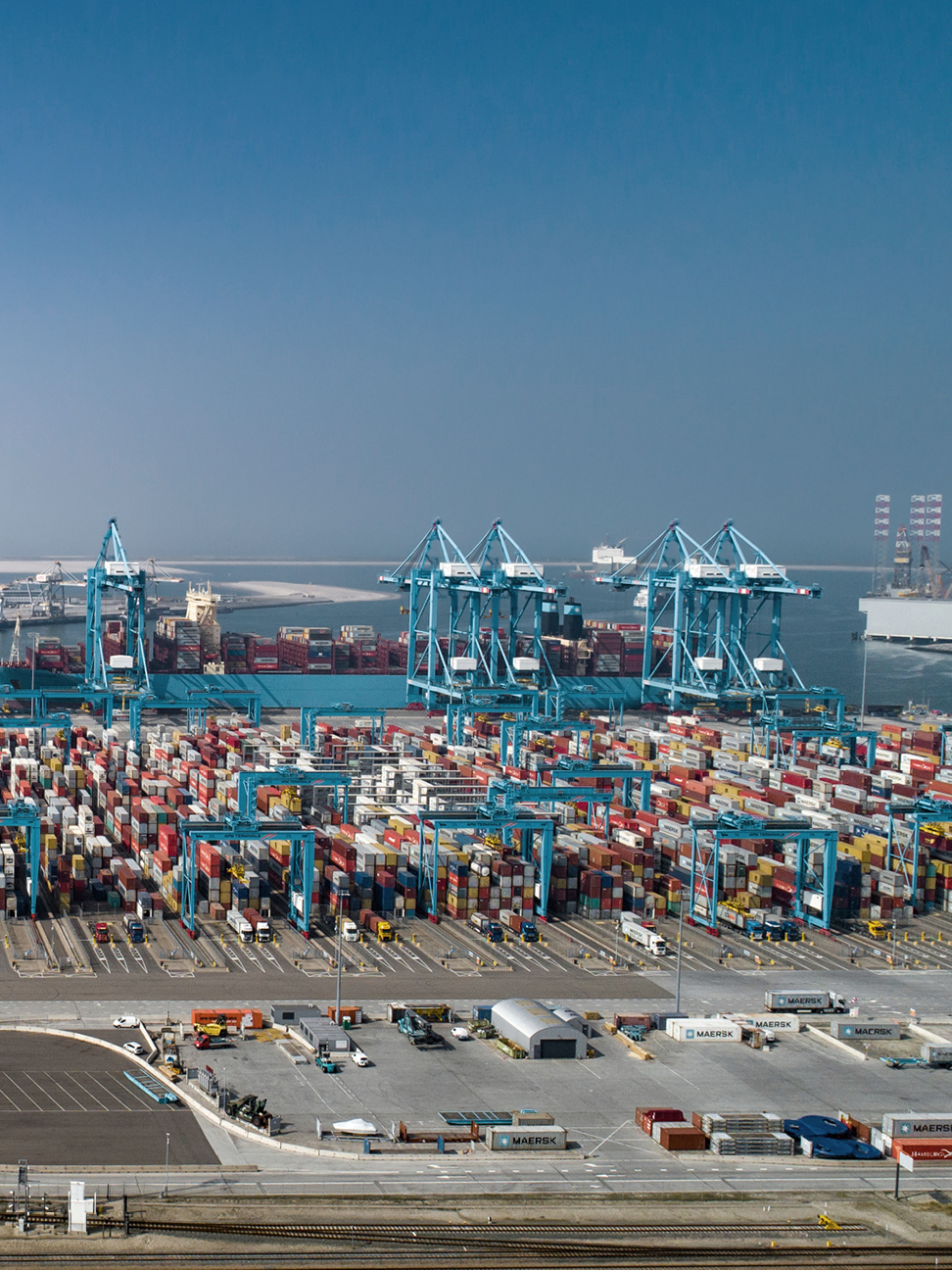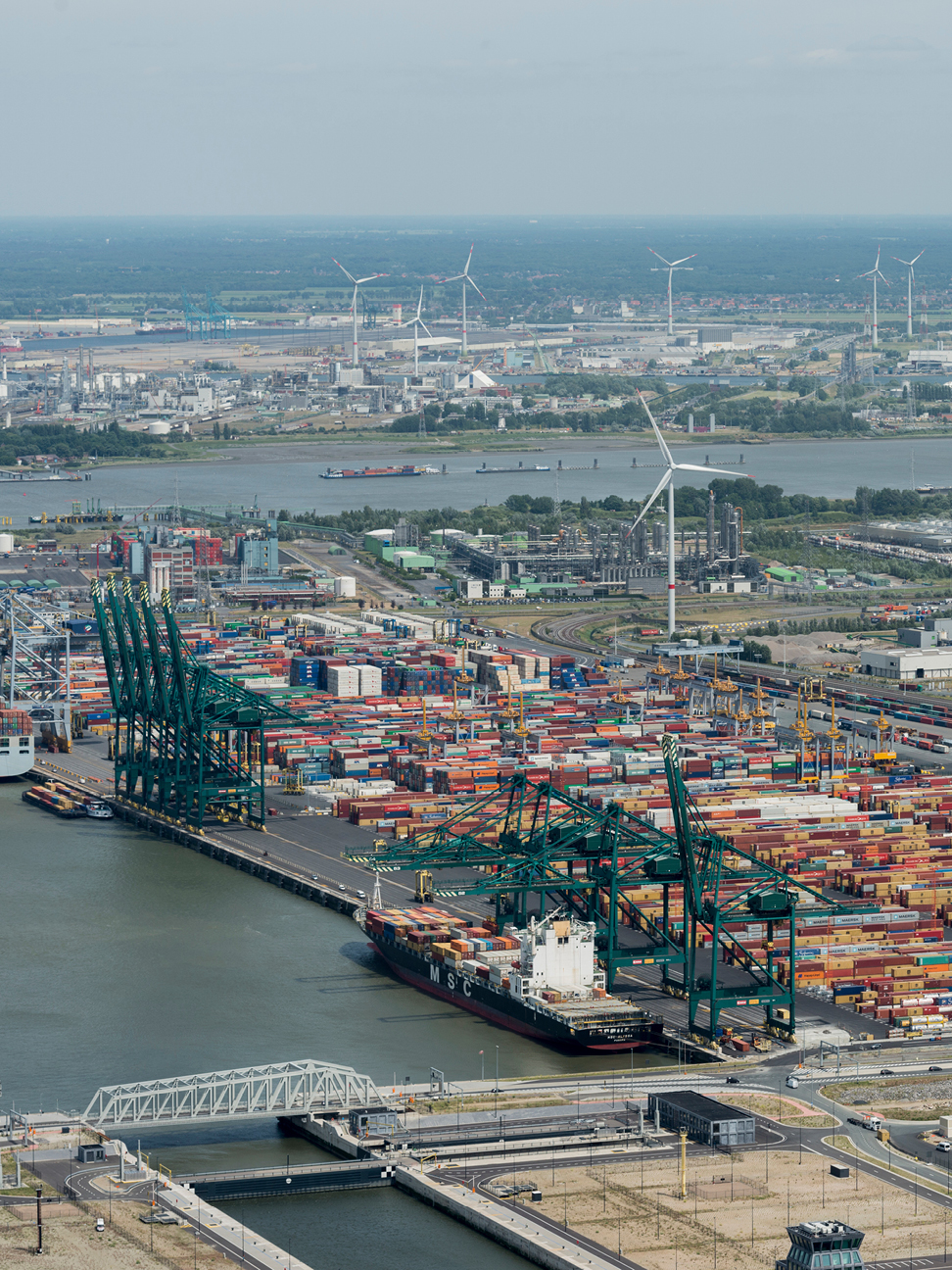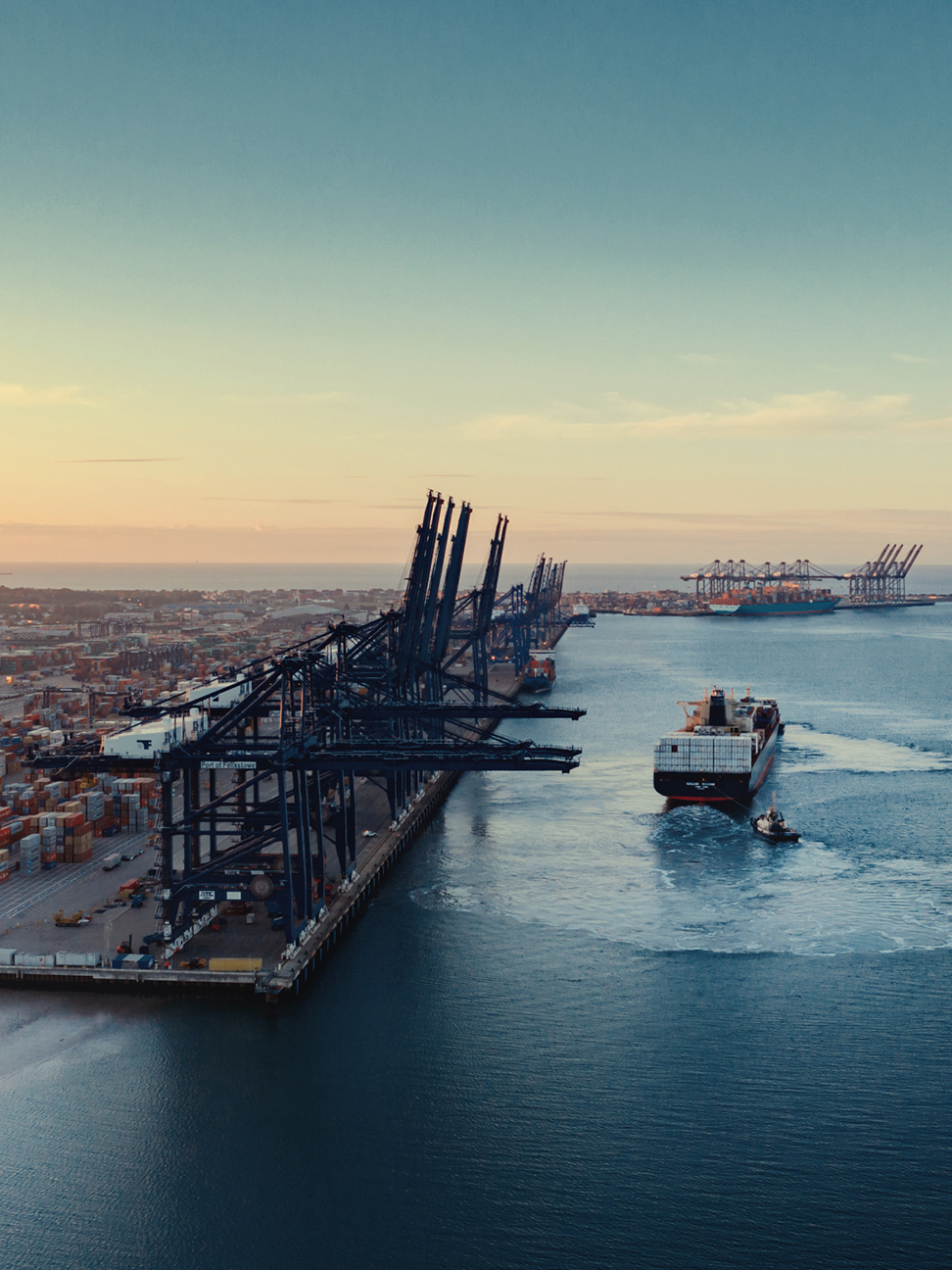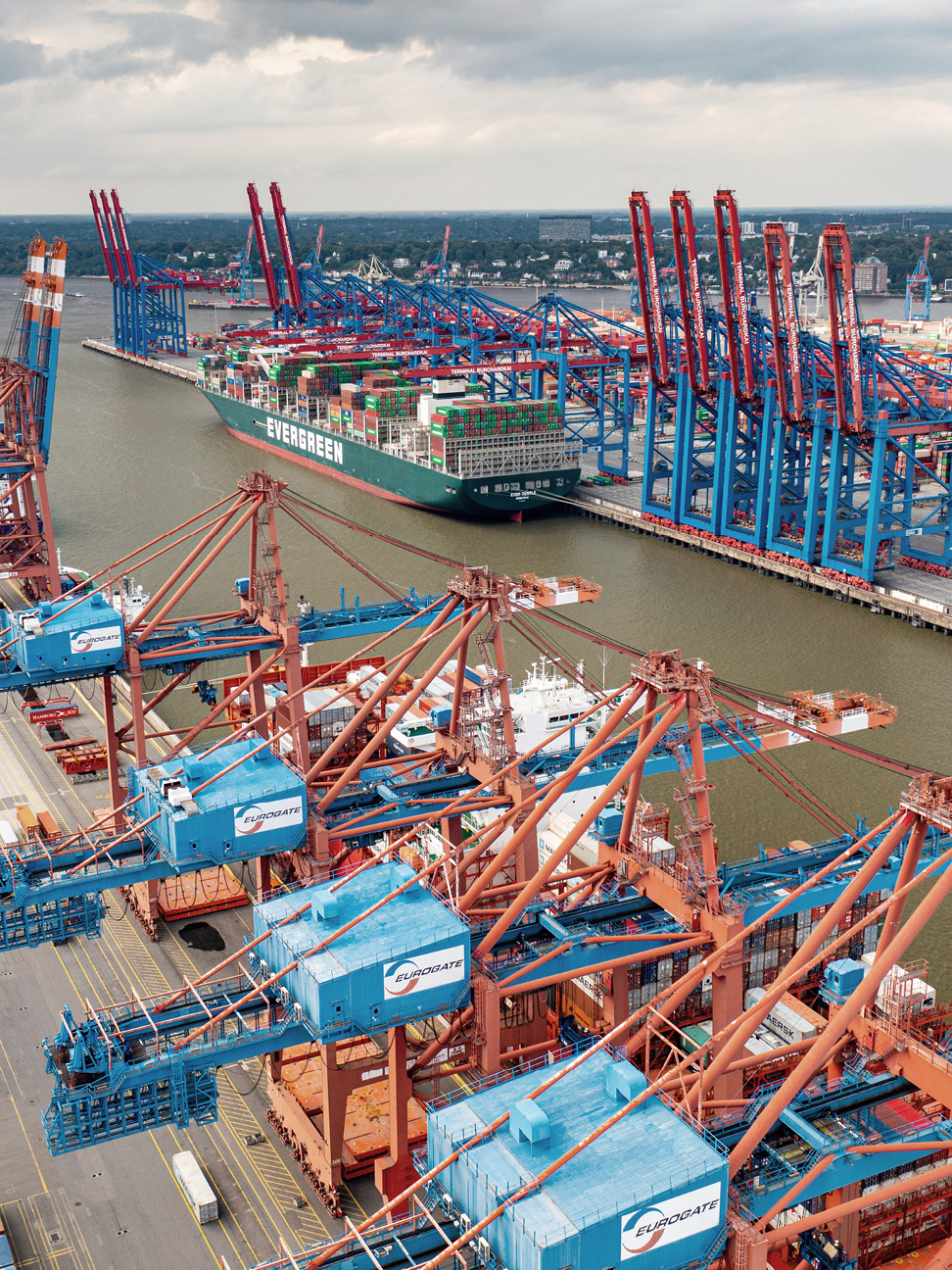Future Cities
2022 Global Seaport Review: Rotterdam, Netherlands
Navigating evolving global seaport regions and their impact on industrial real estate
December 13, 2022 4 Minute Read

Rotterdam is the largest port in Europe and has an enormous impact on the industrial and logistics sector. It directly employs more than 150,000 people, with a direct added value of approximately €22 billion. The port is essential to both the Rotterdam and Dutch economy.
Overview
The Port of Rotterdam is Europe’s largest seaport. The port sits in the middle of the Rhine delta and Meuse River, providing direct access to the North Sea. It consists of five distinct port areas and three distribution parks that serve more than 500 million consumers throughout Europe. In 2021, the port transported 15.3 million TEUs and ranked seventh on the United Nations Port Liner Shipping Connectivity Index.
In 2021, the port handled 28,876 seagoing vessels and 99,558 inland vessels. The port also handles commodities such as bulk goods, crude oil and mineral oil products. It is a major component of the Netherlands economy, with direct and indirect added value totaling €63 billion in 2021, or 8.2% of Dutch GDP. The port directly and indirectly employs approximately 565,000 people in the Netherlands.
Figure 1: TEU volumes
Source: CBRE Research, Port of Rotterdam, 2022.
Figure 2: Population demographics
Source: macrotrends.net, 2022.
First fully automated port in Europe with the highest container capacity in Northwest Europe
Port features
Rotterdam’s port has a surface area of around 100 square kilometers, and a total port area length of 42 kilometers. It has the highest container capacity in Northwest Europe and a 24-meter (78-foot) draught that can handle some of the world’s largest ships. Due to the port’s depth, shipping companies can maximize the capacity of their vessels, making it the first and last port of call for many of the world’s biggest container ships.
The port operates four fully automated terminals and accepts vessels around the clock. It includes 20 container depots across more than 120 hectares to store, repair, clean and inspect empty containers.
In August 2022, Hutchison Port Holdings (HPH) and MSC subsidiary Terminal Investment Limited (TIL) jointly agreed to develop a new container terminal with five deep-sea berths. The fully automated terminal will add around 7 million TEUs of annual capacity when it begins operations in 2027, with vessels unloaded by autonomous cranes and cabinless ground vehicles.
Figure 3: Port details
Source: CBRE Research, Port of Rotterdam, 2022.
Trade partners
The Port of Rotterdam has 2,307 direct connections across sea, railway and inland shipping routes, including scheduled deep-sea services to more than 1,000 international ports in 2021.
The Netherlands’ main export partners include Germany, Belgium, France, the U.K. and the U.S. The Netherlands imports the largest amount of goods from Germany, China, the U.S., Belgium and the U.K.
Rotterdam partners with ports in Kuala Tanjung, Indonesia; Bintulu/Samalaju, Malaysia; Pecem, Brazil; and Sohar Port, Oman.
Intermodal transportation
More than 400 international container rail services run to and from the port every week. By train, containers can reach many destinations in Europe within 24 hours. For shorter distances, the port is well connected by roads, including the A15, which links to national and European motorway networks.
Rotterdam is well located for inland shipping, using the Maas and Rhine rivers to reach Germany, Belgium, France, Switzerland and Austria, and the Main and Danube rivers to reach the Black Sea. Inland shipping accounts for around half of incoming and outgoing cargo between the port and destinations in Europe.

Real estate influence
Due to the port’s central role in global supply chains, the surrounding logistics industry is well-developed and has access to a deep knowledge base and a skilled labor pool. Most central fulfilment operations have moved further inland towards Bleiswijk (Zalando) or Ridderkerk (Picnic), with operations in Rotterdam and surrounding areas serving nearby population centers or port-related activities. Many logistics properties are found along the A15 motorway, which runs along the entire port area.
In H1, Rotterdam logged 143,500 sq. m. of logistics take-up, up 24% year-over-year. Rotterdam’s vacancy rate fell to 2.7% in Q2, down from 5.9% in Q2 2021. Prime rents reached €75.00 per sq. m. per year in Q2, up 7% from the prior quarter.
Figure 4: Industrial & logistics market stats
Source: CBRE Research, H1 2022.
Explore Global Seaports by Port
Related Services
- Property Type
Industrial & Logistics
We represent the largest industrial real estate platform in the world, offering an integrated suite of services for occupiers and investors.
- Property Type
Ports
Manage all your integrated logistics needs with services that combine our industrial roots with extensive supply chain experience.
- Consulting
Supply Chain Advisory
CBRE Supply Chain Advisory helps you solve complex business problems and build distinct advantage through supply chain transformations.
Insights in Your Inbox
Stay up to date on relevant trends and the latest research.









